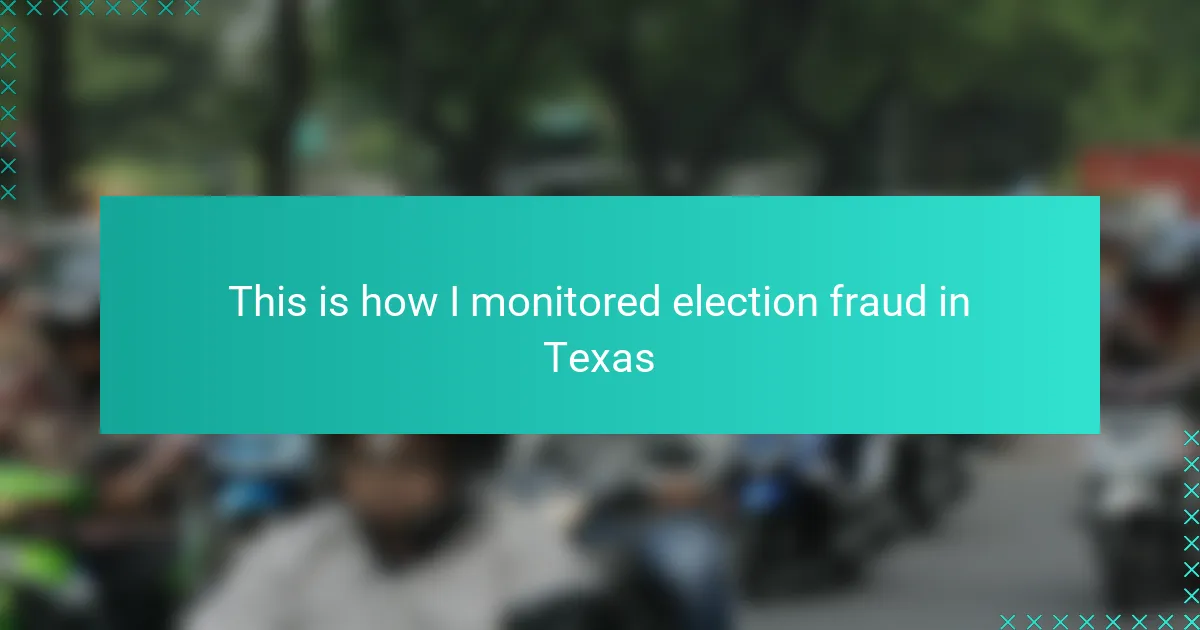Key takeaways
- Monitoring election fraud requires a combination of technology and human observation to effectively identify irregularities.
- Key indicators of potential fraud include unusual absentee ballot spikes, discrepancies in voter signatures, and irregular ballot count timings.
- Challenges faced include overwhelming data volumes, resistance from election officials, and the need for sustained focus during long monitoring sessions.
- Patience, community communication, and the balance of technology with human judgment are crucial for effective election monitoring.
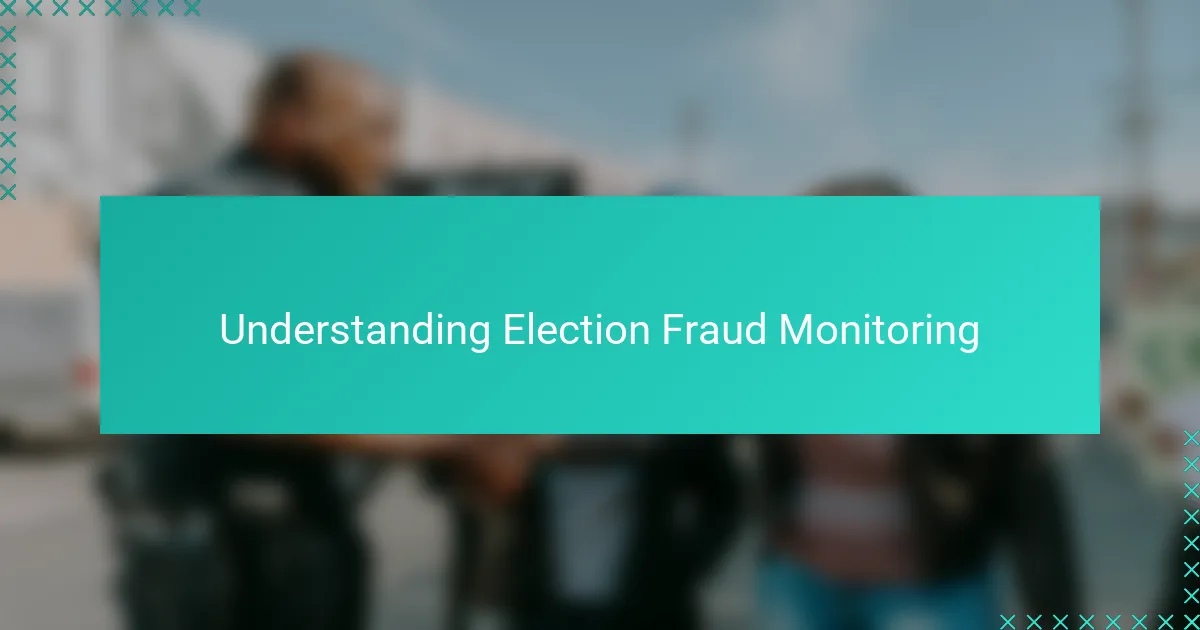
Understanding Election Fraud Monitoring
When I first delved into election fraud monitoring, I quickly realized it requires sharp attention to detail and a deep understanding of procedural norms. How could I distinguish between a genuine irregularity and a mere administrative hiccup? This question haunted me initially, pushing me to study every ballot, every signature, and every timestamp with relentless curiosity.
What struck me most was how subtle some forms of fraud can be. It’s not always about blatant ballot stuffing; sometimes, it’s about mismanagement or misleading data entry that tips the scale just enough. Watching the process unfold live, I felt a mix of frustration and vigilance, knowing every minor anomaly could compromise trust in the entire electoral system.
Monitoring election fraud demands both patience and a healthy skepticism. I found myself constantly asking: Are these patterns genuine mistakes or intentional acts? This mindset helped me maintain objectivity and avoid jumping to conclusions, a balance I believe is essential for anyone involved in safeguarding democracy.
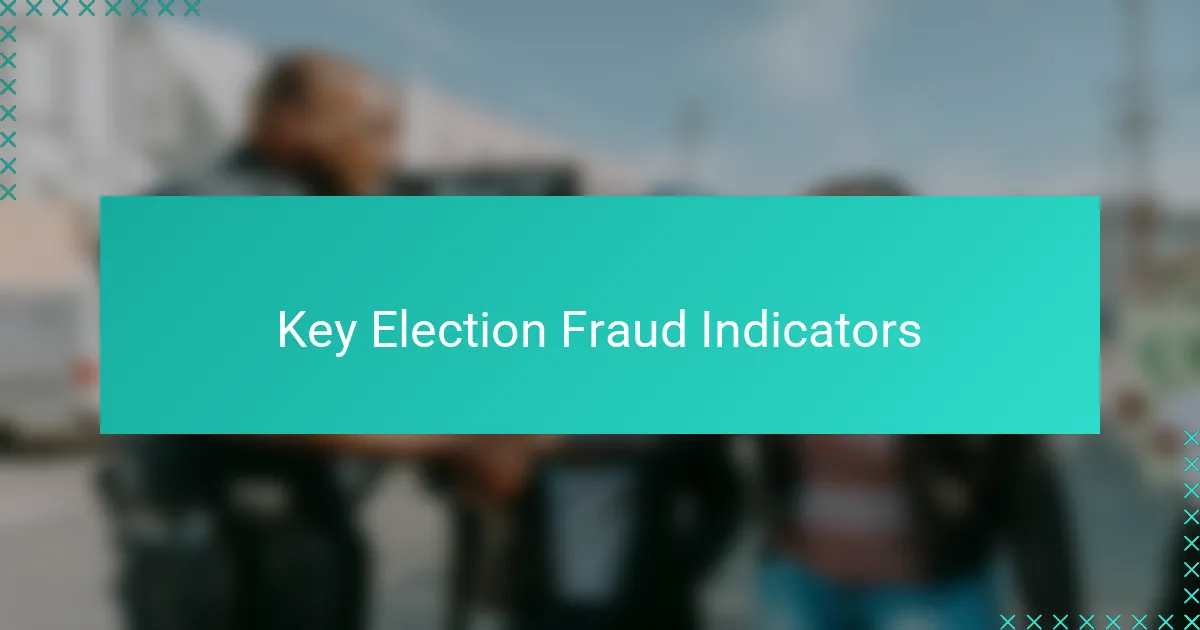
Key Election Fraud Indicators
One of the earliest red flags I noticed was the presence of unusually high numbers of absentee ballots coming from specific precincts. It made me wonder—could such a concentrated spike really be innocent, or was it a sign of something more deliberate? Paying attention to these voting patterns helped me separate normal fluctuations from suspicious anomalies.
Another key indicator was discrepancies in voter signatures that didn’t quite match the ones on file. At first, I hesitated to call it fraud—after all, people’s handwriting can change or be affected by a pen’s quality. But when these mismatches clustered together in a way that defied natural explanation, I couldn’t ignore the warning signs any longer.
What truly challenged me were irregularities in the timing of ballot counts. In some cases, results appeared expedited beyond reasonable limits, raising questions about the accuracy and authenticity of the process. Watching the clock become a factor in validating votes was both frustrating and eye-opening, reminding me that fraud isn’t always about ballots—it’s about trust in the system itself.
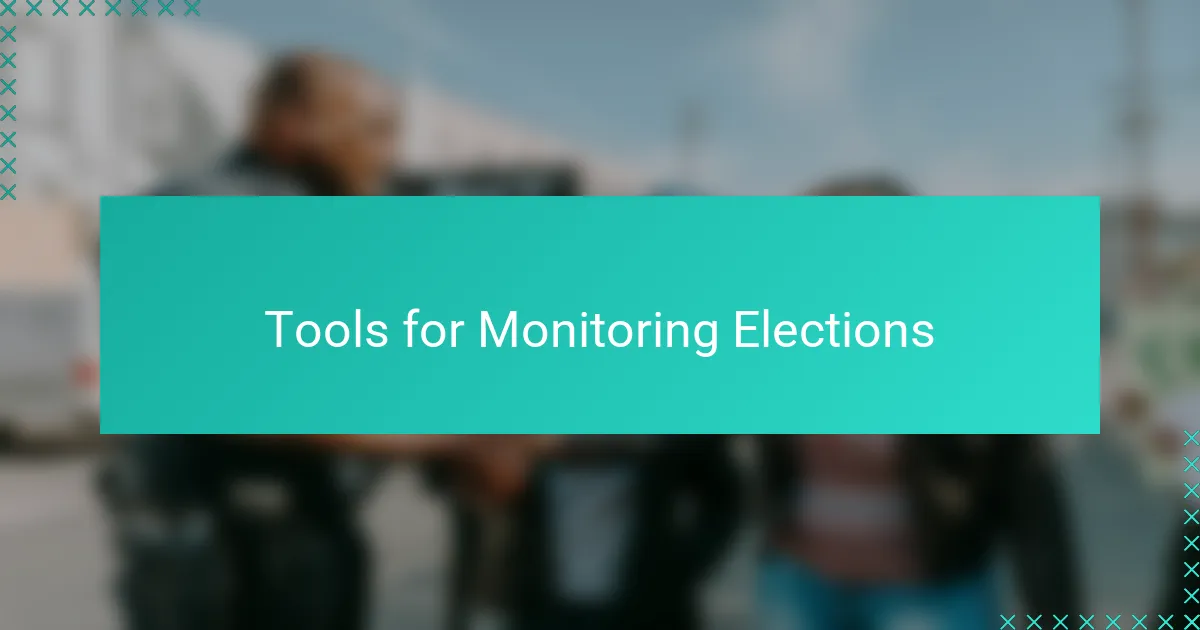
Tools for Monitoring Elections
When I started monitoring elections, I quickly realized that without the right tools, detecting irregularities felt like searching for a needle in a haystack. Digital scanners that capture ballot images and signature verification software became my eyes where human observation alone wasn’t enough. Have you ever tried matching thousands of signatures by hand? Let me tell you—it’s exhausting and prone to error.
I also relied heavily on data analytics platforms designed to flag anomalies in voting patterns. These tools alerted me to unexpected spikes in absentee ballots or unusual timing in vote reporting that I might have missed otherwise. There was this one night when an alert popped up showing precinct-level results changing at a strange pace—my heart raced because it didn’t sit right with me.
But technology alone isn’t the hero here; combining these tools with on-the-ground observation made all the difference. Mobile apps allowed me to report irregularities in real time, connecting me with other monitors quickly. It was empowering to have instant communication channels—when every minute counts, these tools turn scattered information into a clearer picture of what’s happening.
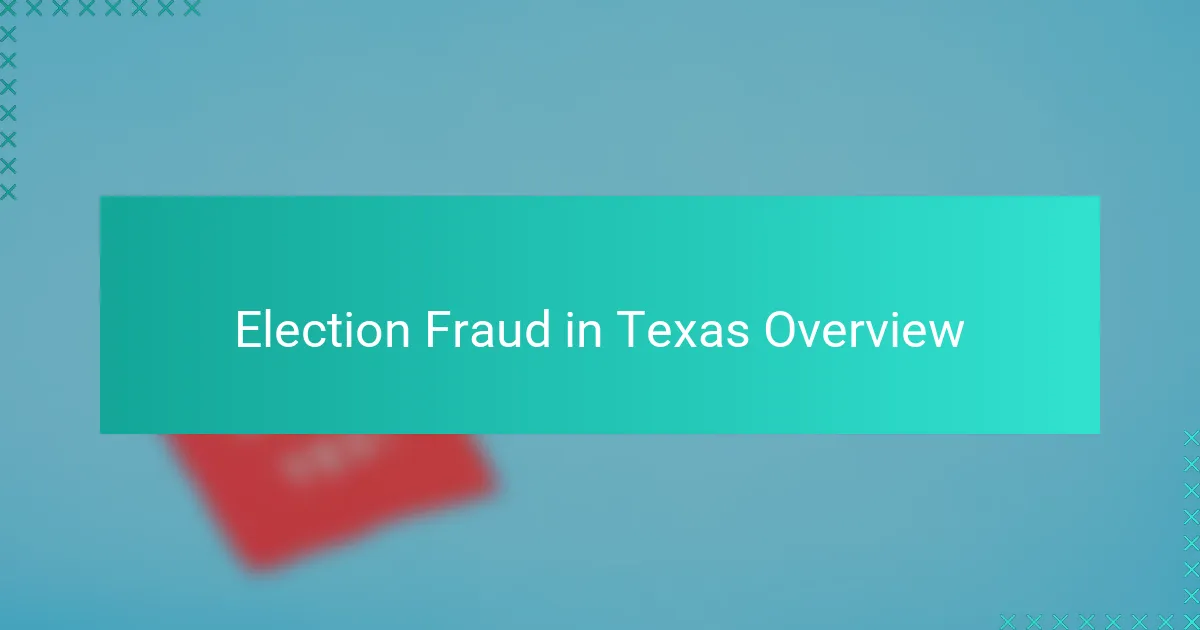
Election Fraud in Texas Overview
Election fraud in Texas carries a complex history that often blurs the line between genuine errors and intentional manipulation. I found myself asking repeatedly: how can we trust a system where some precincts show suspiciously high ballot counts while others lag far behind? This question fueled my determination to look deeper.
What surprised me most was the sheer scale of potential vulnerabilities, ranging from absentee ballot irregularities to mismatched signature verifications. Each discovery brought a mix of frustration and urgency—if even a fraction of these issues were widespread, how much faith could voters place in the results?
Yet, the challenge in Texas lies not just in identifying fraud but in navigating the political and legal frameworks that define elections. It’s a reminder that monitoring isn’t just about numbers, but about understanding context—and that complexity turned every suspicious pattern into a puzzle I was compelled to solve.
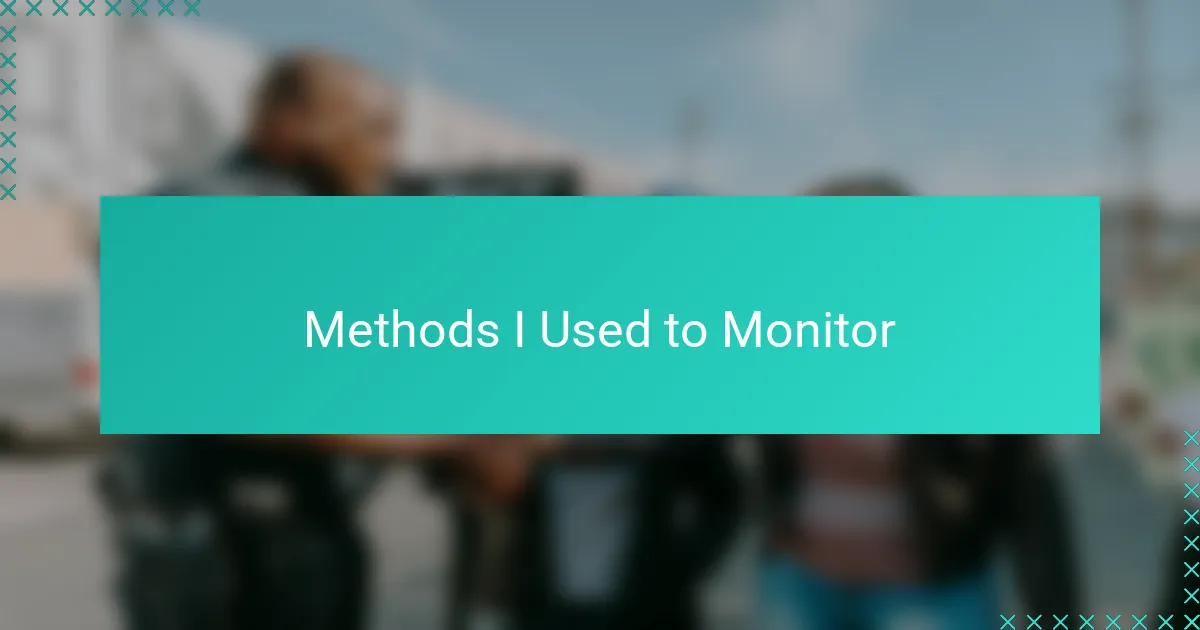
Methods I Used to Monitor
To monitor election fraud effectively, I started by cross-referencing physical ballots with digital records, which was painstaking but necessary. Have you ever tried verifying thousands of ballot signatures against databases? It’s tedious and draining, yet it gave me a front-row seat to patterns that wouldn’t be obvious otherwise.
I also made it a point to be present at polling stations and counting centers whenever possible. Being on the ground allowed me to notice subtle inconsistencies like delayed ballot deliveries or irregular handling of absentee envelopes—details that data alone might miss. It was these moments that reminded me how much human observation still matters in an age of technology.
Lastly, I leveraged real-time communication with other monitors through secure group chats. Whenever something felt off—a sudden drop in reported votes or a precinct closing early—we could immediately verify and document it. This instant feedback loop not only kept me alert but also created a sense of shared responsibility that kept fatigue at bay.
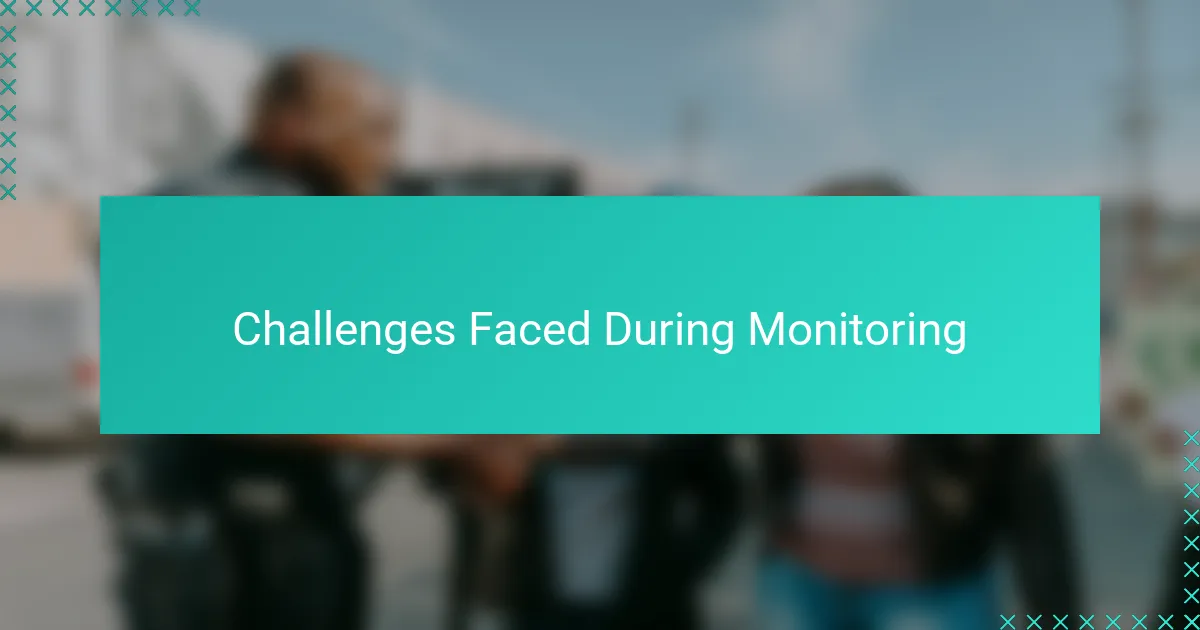
Challenges Faced During Monitoring
One of the toughest hurdles I faced was the sheer volume of data coming at me from multiple precincts all at once. It felt overwhelming at times—how could I possibly keep track of every suspicious spike or mismatch without missing something crucial? I quickly learned that without prioritizing which red flags needed immediate attention, I risked drowning in minutiae.
Another challenge was the resistance I encountered from some election officials who were wary of outside scrutiny. Have you ever tried asking tough questions but received cold shoulders or vague answers? That mistrust added a layer of frustration because transparency is supposed to be the cornerstone of fair elections, yet it sometimes felt like an uphill battle just to get basic information.
Lastly, fatigue was a real opponent during long monitoring sessions. My eyes strained from scanning ballots, and my mind wrestled with uncertainty—was I seeing genuine fraud or just anomalies born from human error? Maintaining focus over hours and days required not only stamina but a mindset that balanced vigilance with healthy skepticism, a tough but necessary act.

Lessons Learned from Texas Monitoring
Reflecting on my time monitoring elections in Texas, one lesson stands out clearly: patience is non-negotiable. At first, I wanted instant answers whenever an irregularity appeared, but learning to step back and analyze patterns over time made all the difference. Have you ever felt the urge to jump to conclusions, only to realize a deeper look reveals a more complex story? That’s exactly what happened to me, teaching me how crucial it is to differentiate between surface noise and true fraud.
Another insight came from the value of community and communication. When doubts crept in during late-night counting sessions, it was the immediate dialogue with fellow monitors that kept me grounded—and often saved me from misinterpretation. I asked myself, “Can I really trust my lone observations without others’ perspectives?” Experience told me no, and that collaborative approach became a cornerstone of effective monitoring.
Finally, I learned that technology, while powerful, can never replace human judgment. Tools flagged anomalies, but interpreting their significance required intuition honed by hands-on experience. It reminded me that safeguarding elections isn’t just about data; it’s about people—real voters, real watchers, and real accountability. This realization reshaped how I approached each new irregularity, blending tech with trust in human insight.
